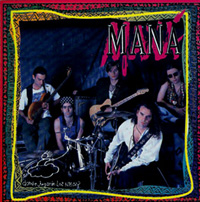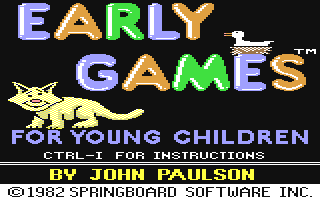Related Research Articles

Nolan Kay Bushnell is an American businessman and electrical engineer. He established Atari, Inc. and the Chuck E. Cheese's Pizza Time Theatre chain. Bushnell has been inducted into the Video Game Hall of Fame and the Consumer Electronics Association Hall of Fame, received the BAFTA Fellowship and the Nations Restaurant News "Innovator of the Year" award, and was named one of Newsweek's "50 Men Who Changed America." Bushnell has started more than twenty companies and is one of the founding fathers of the video game industry. He is on the board of Anti-Aging Games. In 2012 he founded an educational software company called Brainrush, that is using video game technology in educational software.

An amusement arcade is a venue where people play arcade games, including arcade video games, pinball machines, electro-mechanical games, redemption games, merchandisers, or coin-operated billiards or air hockey tables. In some countries, some types of arcades are also legally permitted to provide gambling machines such as slot machines or pachinko machines. Games are usually housed in cabinets. The term used for ancestors of these venues in the beginning of the 20th century was penny arcades.

Pole Position is an arcade racing simulation video game that was released by Namco in 1982 and licensed to Atari, Inc. for US manufacture and distribution, running on the Namco Pole Position arcade system board. It is considered one of the most important titles from the golden age of arcade video games. Pole Position was an evolution of Namco's earlier arcade racing electro-mechanical games, notably F-1 (1976), whose designer Sho Osugi worked on the development of Pole Position.

Racing games are a video game genre in which the player participates in a racing competition. They may be based on anything from real-world racing leagues to fantastical settings. They are distributed along a spectrum between more realistic racing simulations and more fantastical arcade-style racing games. Kart racing games emerged in the 1990s as a popular sub-genre of the latter. Racing games may also fall under the category of sports video games.

Yu Suzuki is a Japanese game designer, producer, programmer, and engineer, who headed Sega's AM2 team for 18 years. He has been responsible for a number of Sega's arcade hits, including three-dimensional sprite-scaling games that used "taikan" motion simulator arcade cabinets, such as Hang-On, Space Harrier, Out Run, and After Burner, and pioneering polygonal 3D games such as Virtua Racing and Virtua Fighter, which are credited with popularizing 3D graphics in video games, as well as the critically acclaimed Shenmue series As a hardware engineer, he led the development of various arcade system boards, including the Sega Space Harrier, Model 1, Model 2, and Model 3, and was involved in the technical development of the Dreamcast console and its corresponding NAOMI arcade hardware.
Sim (simulated) racing or racing simulation are the collective terms for racing game software that attempts to accurately simulate auto racing, complete with real-world variables such as fuel usage, damage, tire wear and grip, and suspension settings. To be competitive in sim racing, a driver must understand all aspects of car handling that make real-world racing so difficult, such as threshold braking, how to maintain control of a car as the tires lose traction, and how properly to enter and exit a turn without sacrificing speed. It is this level of difficulty that distinguishes sim racing from "arcade" style driving games where real-world variables are taken out of the equation and the principal objective is to create a sense of speed as opposed to a sense of realism.
Chicago Coin was one of the early major manufacturers of pinball tables founded in Chicago, Illinois. The company was founded in 1932 by Samuel H. Gensburg to operate in the coin-operated amusement industry. In 1977, Gary Stern and Sam Stern purchased the assets of the Chicago Coin Machine Division as it was then called to found Stern Electronics, Inc. They also produced various arcade games during the 1960s to 1970s.
Though not a complete history, herein is a list of what many would consider most of the "game" changers that made arcade experiences so powerful and nostalgic.
The following outline is provided as an overview of and topical guide to video games:
An interactive film is a video game or other interactive media that has characteristics of a cinematic film. In the video game industry, the term refers to a movie game, a video game that presents its gameplay in a cinematic, scripted manner, often through the use of full-motion video of either animated or live-action footage. In the film industry, the term refers to interactive cinema, a film where one or more viewers can interact with the film and influence the events that unfold in the film.

¿Dónde Jugarán los Niños? is the second studio album released by Mexican rock band Maná released in 1992. This album contained many of the hits that catapulted them to international fame and established them as one of the leading Latin rock acts of the 1990s, including "Oye Mi Amor", "¿Dónde Jugarán los Niños?", "Vivir Sin Aire", "Te Llore Un Río", "Cómo te deseo" and "De pies a cabeza". The album has reached #4 on Billboard's Top Latin Albums Chart. Ulises Calleros was replaced by César "Vampiro" López. The band re-released this album with bonus remixes on February 15, 1994. Singer Mijares covered "Vivir sin Aire" in his 2009 Spanish album Vivir Así. "Oye Mi Amor" is one of the international songs included in the rhythm video game Rock Band 3. As of 2000, it sold more than 6 millions of copies.

F-1 is a 1976 electro-mechanical arcade racing game developed and published by Nakamura Manufacturing Company (Namco), and distributed in North America by Atari, Inc. The player uses a steering wheel to control a Formula One racer, which must avoid collision with other vehicles. The game uses a miniature diorama with small, plastic cars to represent the player's car and opponents on a physical, rotating track, while also featuring a projector system and lighting tricks to create the illusion of racing.

"The Young Ones" is a single by Cliff Richard and the Shadows. The song, written by Sid Tepper and Roy C. Bennett, is the title song to the 1961 film The Young Ones and its soundtrack album.
A serious game or applied game is a game designed for a primary purpose other than pure entertainment. The "serious" adjective is generally prepended to refer to video games used by industries like defense, education, scientific exploration, health care, emergency management, city planning, engineering, and politics. Serious games are a subgenre of serious storytelling, where storytelling is applied "outside the context of entertainment, where the narration progresses as a sequence of patterns impressive in quality ... and is part of a thoughtful progress". The idea shares aspects with simulation generally, including flight simulation and medical simulation, but explicitly emphasizes the added pedagogical value of fun and competition.
The history of video games spans a period of time between the invention of the first electronic games and today, covering many inventions and developments. Video gaming reached mainstream popularity in the 1970s and 1980s, when arcade video games, gaming consoles and home computer games were introduced to the general public. Since then, video gaming has become a popular form of entertainment and a part of modern culture in most parts of the world. The early history of video games, therefore, covers the period of time between the first interactive electronic game with an electronic display in 1947, the first true video games in the early 1950s, and the rise of early arcade video games in the 1970s. During this time there was a wide range of devices and inventions corresponding with large advances in computing technology, and the actual first video game is dependent on the definition of "video game" used.
"I'm Lookin' out the Window" is a ballad written by Don Raye and John Jacob Niles. Peggy Lee first recorded the song as a B-side for her 1959 single "Hallelujah, I Love Him So". The song is best known as a hit record for Cliff Richard in 1962 in numerous countries, although not in the United States.

Disney's Activity Center are a series of games released by Disney Interactive which provide customers with various activities and minigames to be completed, using aspects of their licensed property.

Early Games is a 1982 educational video game by Counterpoint Software and Springboard Software, designed by John Paulson. The game contain a series of educational mini-games targeted at preschoolers and designed to teach basic math, language, and logic skills. It was part of the Skill Builder series, along with Fraction Factory, Match Maker, and Piece of Cake.

Math Blaster! is a 1983 educational video game, and the first entry in the Math Blaster series within the Blaster Learning System. The game was developed by former educator Jan Davidson. It would be remade and re-released a number of times starting with Math Blaster Plus! and followed by New Math Blaster Plus. A complete makeover over was done for Math Blaster Episode I: In Search of Spot in 1993.

An arcade game or coin-op game is a coin-operated entertainment machine typically installed in public businesses such as restaurants, bars and amusement arcades. Most arcade games are presented as primarily games of skill and include arcade video games, pinball machines, electro-mechanical games, redemption games or merchandisers.
References
- ↑ "1959 Capitol Projector Corp Corporation Auto Test coin operated arcade driving game". www.pinrepair.com. Retrieved 2019-09-04.
- ↑ GameOrigo. "Auto Test – Arcade – 1954 – GameOrigo" . Retrieved 2019-09-04.
- ↑ "Auto Test coin-op misc. game by Capitol Projector (1956)". www.arcade-history.com. Retrieved 2019-09-04.
- ↑ Inc, Nielsen Business Media (1962-04-14). Billboard. Nielsen Business Media, Inc.
- ↑ Inc, Nielsen Business Media (1959-10-05). Billboard. Nielsen Business Media, Inc.
- ↑ Inc, Nielsen Business Media (1959-02-02). Billboard. Nielsen Business Media, Inc.
- ↑ Williams, Andrew (16 March 2017). History of Digital Games: Developments in Art, Design and Interaction. CRC Press. pp. 20–5. ISBN 978-1-317-50381-1.